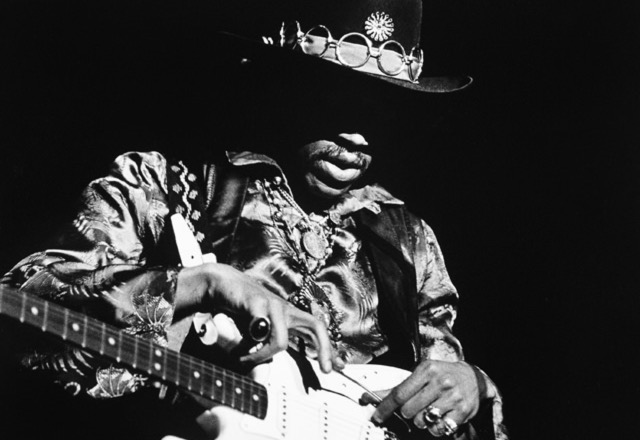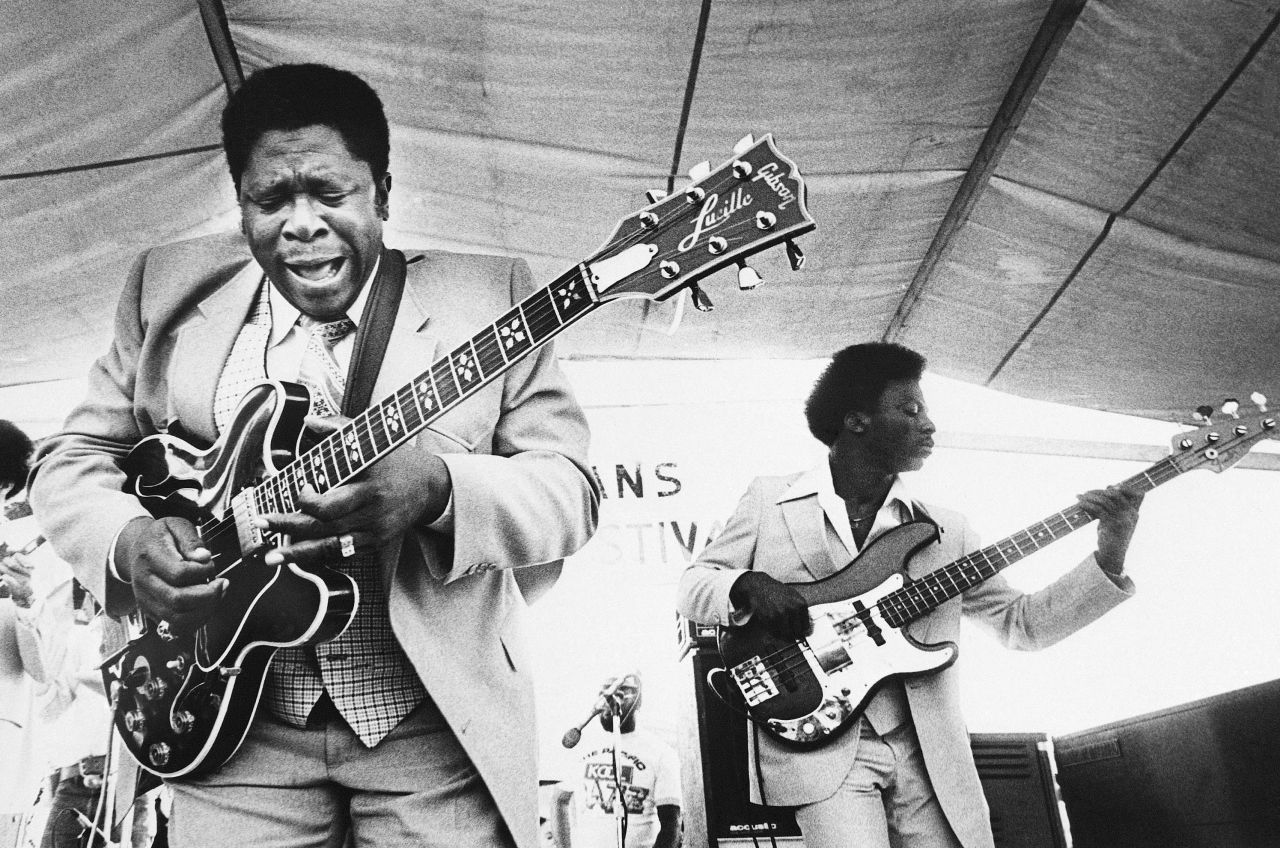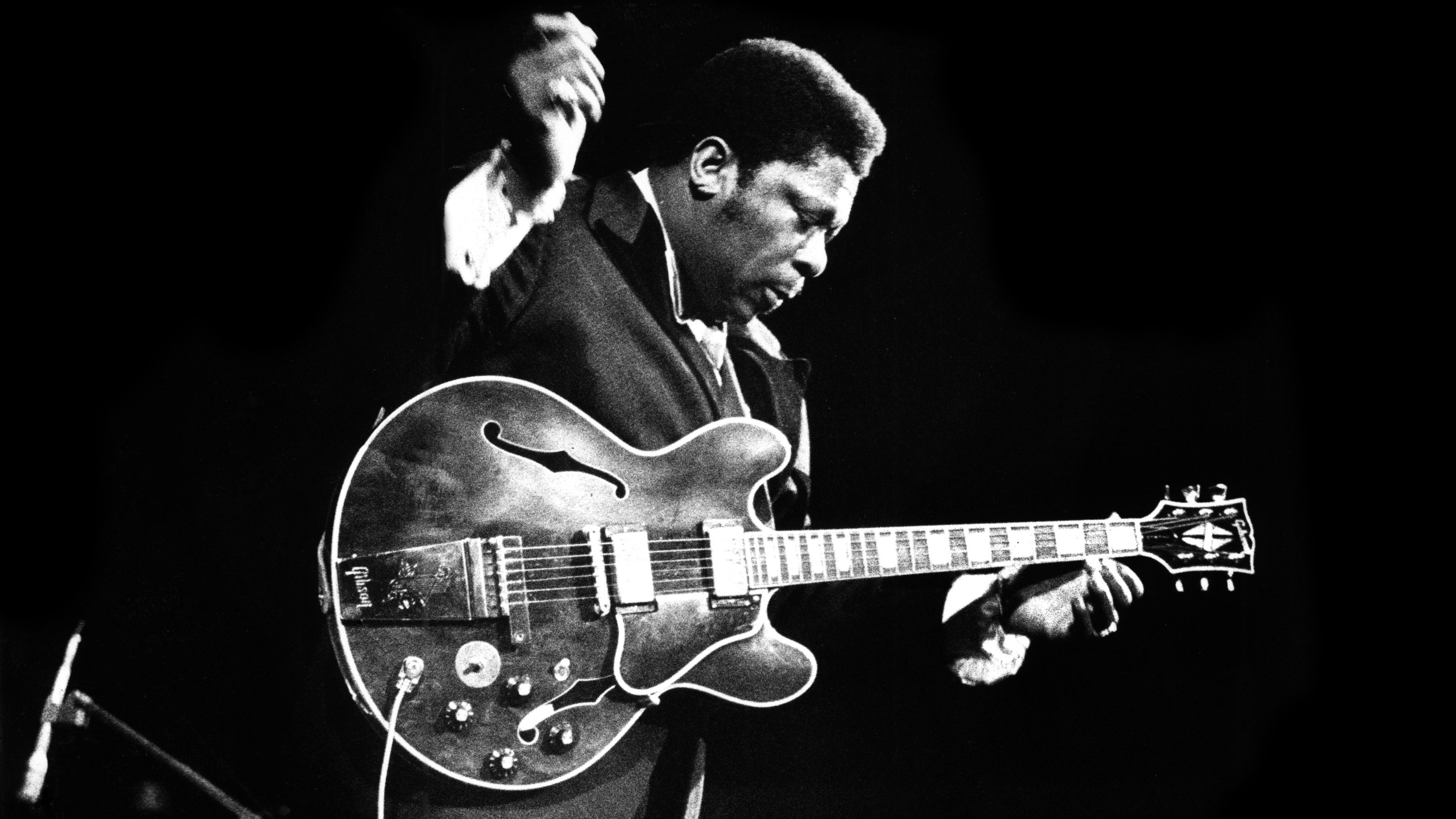If you find you’re running out of ideas when soloing over a blues, then you absolutely must learn blues scales in open positions. When you think about open position scales in the blues, you probably think of the classic open E blues/minor pentatonic box, which is the same as the Clapton box up at the twelfth fret, which we looked at in the previous article. Although the key of E is probably the most popular key for a blues, other keys such as A, D, G, and B aren’t that far behind, yet a lot of guitarists seem to omit playing in these keys in the open positions, which is a shame as there are some great runs and licks to take advantage of, especially if you play acoustic. Let’s check them out.
If you’re not already familiar with the ubiquitous E blues open position, here it is in all its glory (notes in red are the roots):

Try the A blues scale open position as shown below. Remember to make use of the ringing open strings, all of which are available except the B string. There are a ton of blues tunes in A, and this pattern is very useful if you run out of ideas between the 5th and 8th frets.

Next up is the G blues scale which is a fantastic pattern because the open G string can be used to great effect, as well as the open D string which is the 5th in this scale. SRV was a master of open position blues playing as you can see to great effect in Texas Flood, which is technically in G on the fretboard but SRV tuned down a semitone so musically-speaking it’s in Gb.

The key of D is a lesser used but great option for a blues, and the open position scale doesn’t disappoint. Try it over Sunshine of Your Love.

Last but not least is the key of B which also has some great possibilities as you can use all of the open strings except the G string. Try it over Red House.

There are plenty of blues backing tracks on YouTube you could use to practice these patterns, but I really like these ones over at probluesjamtracks.com, just because they feature a nice touch of Hammond organ, and you can find a variety of tracks (52 in total!) for all of the above keys, and pretty much every other key.
The idea here is to use the fat-sounding bottom end of the guitar to play fewer notes but say more. I’ve found these patterns to be incredibly useful when playing acoustic blues due to the very accessible open strings.



